A beautiful plant for decorating the garden can be a kocia. This deciduous shrub has high decorative qualities and is well tolerating the haircut, which is why it is often used when creating vegetable compositions. We will tell about landing the kie and care for her in this article.
General description of culture
China is considered the historic koki's homeland, although today this spectacular plant is widespread all over the world. It can very often be found in Asia, Europe and America, as well as in Japan and Australia.
The culture was obtained in honor of the German botany Wilhelm Koha, a long time of Erlangen's Botanical Garden. The koche in the scientific literature is customary to call the bassia, in addition, it has several people's names: Summer Cyprus, a brochful grass, annual cypress. The bush of the plant has a beautiful clear form, which is something like a cypress, besides, the branches of the koches are often used to produce brooms.
The shrub of this culture has a thick, well-branched crown, he reaches about 1 m. The decorative properties of the plant are due to the blossom, but the beauty of foliage. The inflorescence itself is small and rather unbroken, but the foliage of the Cohi is very attractive. It has a narrow oblong shape and is painted in bright green or lightweight shades. With the onset of autumn, the shrub acquires a saturated-rave or burgundy color, thanks to which it is noticeably stand out against the background of other plants in the garden.
Varieties of kokhi.
The culture under consideration includes about 80 species, 10 of which can be found on the expanses of post-Soviet countries. Most often, the koches grow in a steppe or semi-desert terrain, under the open sunshine. Due to its unpretentiousness, the plant easily tolerates even very saline soils, and some of its subspecies are generally considered weeds that can be found on non-cultural lands and even in landfill places.
Not wild, but specially cultured varieties, which differ attractive views and clear shapes of the bush are used to decorate the garden landscape. Such varieties are good haircut. Consider the most popular Bassiy Garden Varieties:
- Hair-cooked is a decorative grade used by gardeners from the 17th century. This type of culture refers to annuals, has a thick, branched crown, it reaches 1 m. The width of the shrub fluctuates in the range of 50-70 cm. During the flowering period, the bush is covered with very small white flowers, which are practically not visible due to bright thick foliage. The foliage itself is painted in a saturated-salad tint, and by autumn it changes the color, becoming red, pink or burgundy. The shrub has a correct oval shape, slightly elongated up. It is well tolerating the haircut, so the form of the plant can be changed at its discretion. Both in the summer and in the fall, the haze will decorate the garden, often playing the role of a central accent in plant compositions.
- Child's kikhia is a compact plant with a dense thick crown. In the height of the shrub of this variety reaches 50 cm, the foliage is painted in a gentle-salad shade. The peculiarity of this kind is that with the onset of autumn the leaves do not change their color and remain green.
- Acapulco Silver Bassia - a hybrid variety, bred back in the 19th century. The bush of such a kie grows up to 1 m in height, his petty oblong foliage sleeps. Green leaf shade with silver tips. At the autumn time, the culture is painted in purple.
- Koche Sultan is an annual plant with a compact rounded bush growing at 75-100 cm in height. The color of the leaves of this variety is saturated-emerald. In the fall, the bush changes color, becoming burgundy or crimson.
- Splazia bass also refers to annuals. Its growth reaches 1 m, and in the width of the bush grow 60 cm. This variety of culture also changes the color of foliage with the arrival of autumn, but does it much earlier than other varieties.
- Kohia Green Leis is one-year shrub of an oval form. Emerald foliage. The bush tolerates the haircut well, is often used in the creation of live borders.
- Bassia Royal Castle was removed in Russia and is well adapted to the climatic conditions of our country. This shrub is distinguished by small foliage of an attractive gentle green shade, which with the arrival of autumn changes the color to the saturated-burgundy. The height of the bush varies in the range of 90-100 cm, in the width of the plant reaches 55 cm. Pyramidal plant shape, elongated. This branchy bush with a dense crown with ease tolerates a haircut, and is also distinguished by high resistance to pests and diseases.
- Coke woollycertic - decorative annual grade. The low-length bustice of this subspecies of the base of height varies within 10-60 cm. The branches have a yellow-green tint, densely covered with curly villis. Flowers a plant with long co-shaped inflorescences.
- Bassia is a husto-flower - annual, the distinctive characteristics of which are high growth and horizontal location of the branches. In height, such a bush can reach 130 cm. During flowering, the shrub is covered by buds of a rather original type: long white hairs grow around their bases, which give culture an unusual appearance.
- Perennial Coches are rarely used in the decoration of the garden landscape, but some of their varieties are used as feed raw materials. Among the perennial species, such a popular variety can be distinguished, like a coolee. This plant is a low-spirited shrub, the height of which varies within 10-50 cm. Numerous shoots of culture are stealing on the ground and lifted a little upwards, it is due to such a feature of the kie and received its name. The length of its branches is about 70 cm, the shoots are slightly covered with vile. By the autumn, the villi falls out, and the branches acquire a brown shade. The kicky is becoming a powerful and highly branched root system. Flowers culture at the end of summer or at the beginning of autumn, covered with small and almost inconspicuous inflorescences.
Features of growing koches
The first requirement for growing any culture is the right choice of place in the garden. As for the Cohi, in nature it can most often meet in the steppe open area, and therefore, and the place in the site should be selected with similar characteristics. The territory for the cultivation of the bases should be well covered with the Sun, however, this undemanding plant can carry a small shadension. It is not worth planning a culture in a permanent shade, otherwise she will weaken and lose a decorative appearance, her foliage will be pale, and all the beauty is concentrated and focused on the leaves.
Coke seedlings are customary to the site in late spring or early summer, it depends on the climatic zone and weather conditions in the region. It is important that by the time of landing the bassias permanently ended all the frosts, and there was steadily warm weather on the street.
Kohia prefers to grow on neutral soils, it is very important that the soil is nutritious, light and loose. Before planting seedlings to the ground, it is desirable to make nitrogen fertilizers. After 10-12 days after the landing, the culture will need to be contacted again the same composition. The next feeder is carried out in another 30 days. In the summer and autumn, an adult plant fertilize once a week with liquid nutritional compositions - it is necessary for the foliage to be thick and had a beautiful bright shade.
Since the bass people love breathable soil, the soil around the bushes will have to regularly loosen, at the same time removing weeds. This procedure is particularly important during the growing plant.
Timely irrigation is an important component of the care of the Coke. In the summer, especially in hot weather, the culture must often and abundantly irrigate. The land in which the summer cypress is growing, should not disappear. Kokhiya loves moisture and begins to fade in a dry ground literally after 2-3 days. Moisturizing culture should be carried out in the morning or in the evening. If we water the plant in the heat and under the scorching sun, the land is crapped, the water will evaporate from it too quickly and will not reach the roots. In addition, watering under the bright sun contributes to the formation of burns on the leaves.
The reproduction of summer cypress
The most frequent way of breeding the kie is to grow it from seeds. Seed seed on seedlings at the beginning of spring, about the second decade of March. Coche seedlings are also unpretentious as adult plants, but it is still worth adhere to certain rules for its cultivation. For example, the ambient temperature should be maintained at 18-20 ° C, which is why the seeds first germinate in the greenhouse, and only later, when the street is finally warmed, the sprouts are transferred to the open soil. Frosts are dangerous for just the proceeding shoots, so it is necessary to transplant the kille to the site not earlier than the end of May or the beginning of June.
Sometimes a kichy is seeded immediately into the open ground. Fable seeds are plugged into the ground about 1 cm, the distance between the grooves and the wells should be at least 30 cm, since the branchy bushes of this culture love freedom. Immediately after landing, the soil watered and follow, so that it was constantly moisturized. Behind the seedy, it is careful in the same way, because the lack of moisture young leaves quickly fade.
Summer cypress is well multiplied by self-sowing, so the landing must be checked and periodically reload. Too thickened plants will create a shadow and grow badly, besides, they will lose their decorativeness.
Trimming bushes
The kikhia refers to those plants that perfectly carry trimming. This is a great advantage of culture, thanks to which the bushes can form live hedges, borders, ornamental figures. The thick and dense crown is another plus, since such a plant can be given any form. The cut stems of the bass are not growing too fast, so that the bush retains a decorative look after the haircut.
To form a beautiful round-shaped bush, the tops of the branches should be segged. Cohi's haircut is carried out using a secaterator. An important condition for care is to feed plants immediately after a haircut with mineral fertilizers. The shrubs weakened after such procedure will be restored much faster thanks to fertilizers.
Pests of the Cohi, the use of culture in practical and decorative purposes
The most common attack, which is subject to summer cypress, is considered a web tick. The affected plant is easy to recognize, black or brown points are clearly visible on its foliage, which are sometimes moving. Through the time on the branches and between the leaves there is a thin web. If you have noticed this, treat the shrub with a special insecticide, effective with respect to the paw-tick.
Decorative varieties of koches are used in landscape design to create alpinarias, chains, ornaments of flower and lawns. Very spectacular, such shrubs look in rocky and vegetable compositions, as well as in single landings. Even inexperienced gardener can cope with a shrub haircut. This plant allows you to create very spectacular and beautiful compositions on the household plot, the only lack of which is their shortgath.
The koche is used in cooking, in some countries in the kitchens, this culture is added to soups. The plant also has medicinal properties. It is used to treat skin diseases, diseases of the urogenital system, rheumatism, water, swelling. The substances contained in the koches have a stiff, laxative, diuretic action, and also tone the body. It is believed that the bass is effective against rabies, and also helps well with heart disease. The Chinese introduce the extract of this culture into the composition of ointments used for the treatment of skin and nails.
Cocia, photo:

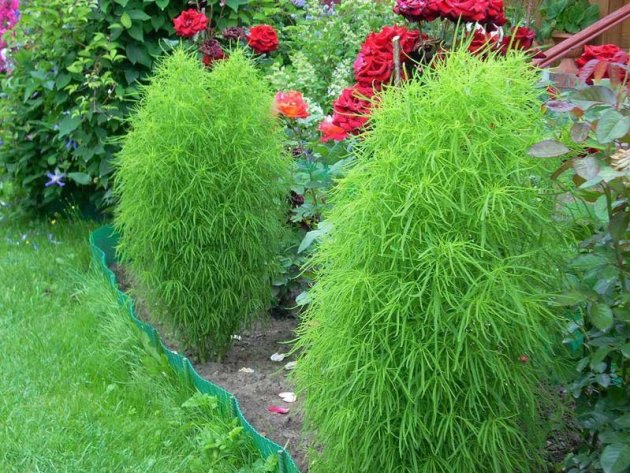
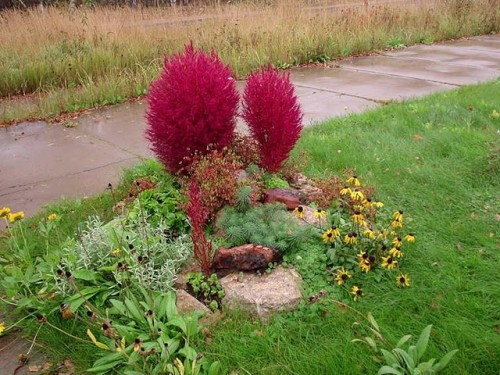


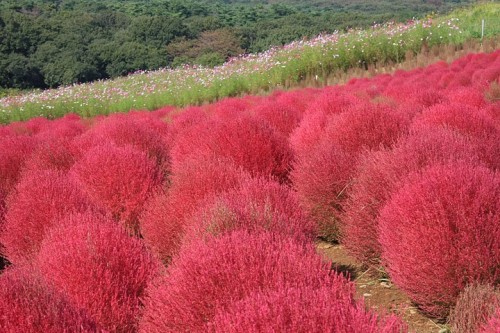
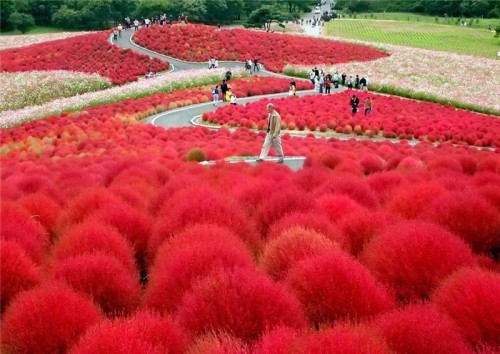
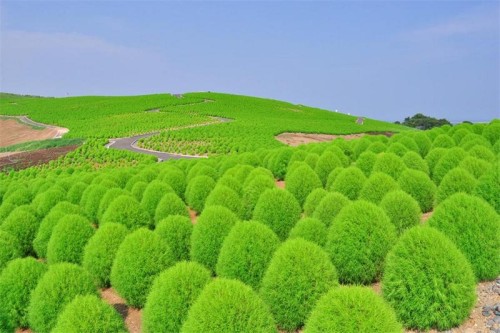
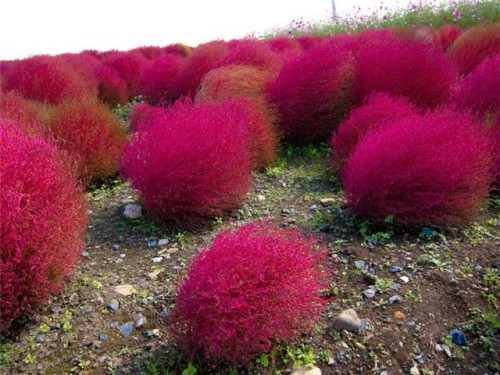
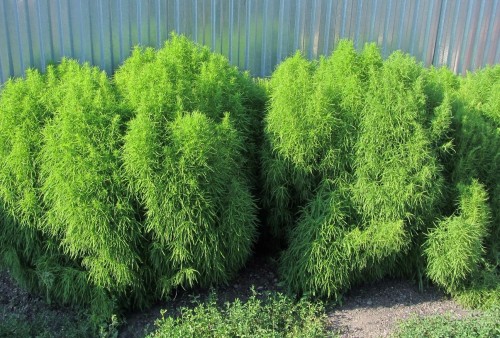
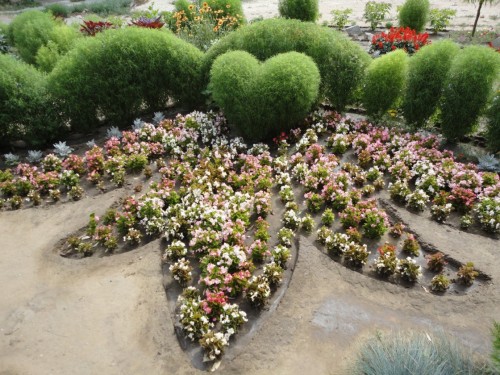

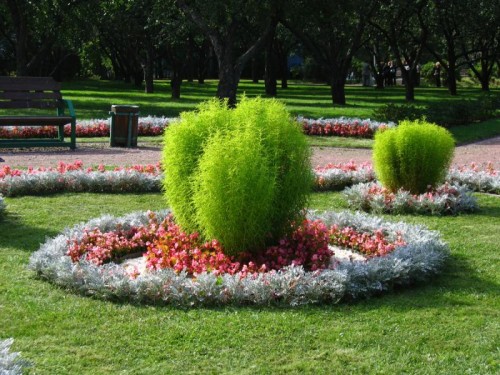
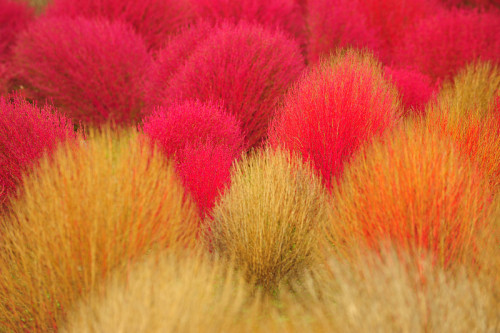












 Start a discussion ...
Start a discussion ...